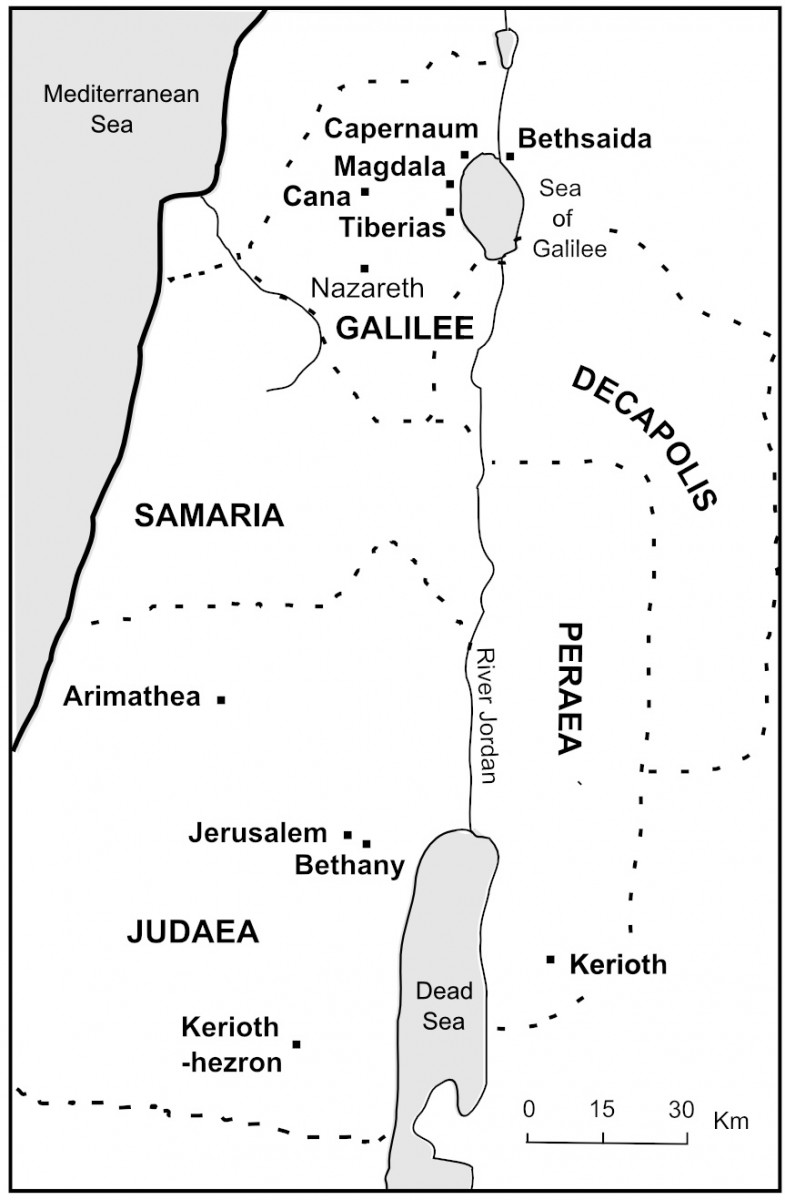31 Jan. Who were Jesus's followers?
"Then Jesus went up on a mountain and called to him the men he wanted, and they came to him. Jesus chose twelve men and called them apostles."
"He wanted them to be with him, and he wanted to send them out to preach, and to have the authority to force demons out of people."
"These are the twelve men he chose: Simon (Jesus named him Peter), James and John, the sons of Zebedee (Jesus named them Boanerges, which means 'Sons of Thunder'), Andrew, Philip, Bartholomew, Matthew, Thomas, James the son of Alphaeus, Thaddaeus, Simon the Zealot, and Judas Iscariot, who later turned against Jesus."
(Mark 3:13-19)

On a hillside overlooking the Sea of Galilee, Jesus appointed a group of twelve ‘apostles’ (close followers who were to be ‘sent out’ to spread the Good News).
They were a mixture of Jewish fishermen, public servants and political activists who represented the twelve tribes of Israel. Some (like Matthew) worked with the Roman authorities; Others (like Simon the Zealot) vowed to rid Israel of the hated occupiers. So who were this mixed bunch, and where did they come from?
Nathaniel (Bartholomew) came from Cana in Galilee (see John 21:2). As he was a fisherman, he probably lived in Capernaum. He joked about Jesus coming from a small Galilean village in the back of nowhere: “Can anything good come from Nazareth?” (John 1:46).
Simeon Barjonas (Simon Peter) and his brother Andrew came from the lakeside town of Bethsaida (see John 1:44), but they lived in Capernaum where their father John (see John 1:42) had his family fishing business. Simon’s wife and mother-in-law lived in the family home in Capernaum (see Mark 1:29-30).
James and his brother John also lived in Capernaum where they worked with their father Zebedee in his fishing business alongside hired men. They often argued with each other, so Jesus gave them the nickname ‘Boanerges’ (‘Sons of Thunder’) (see Mark 3:17)
Philip was from Bethsaida. He was a friend of Nathaniel and may also have been a fisherman (see John 1:43-44).
Levi (Matthew), son of Alphaeus, was a tax collector (Latin, ‘publicanus’ or ‘publican’ – a public servant) who lived in Capernaum (see Mark 2:13-17). As he collected taxes on behalf of the Romans (and probably pocketed the profit), the Pharisees regarded him as a ‘sinner’ (see Matthew 9:9-13).
Judas Iscariot was not a Galilean. ‘Is-Cariot’ probably signifies that he came from Kerioth in Peraea or from Kerioth-hezron in Judaea (see the map). He looked after the disciples’ finances, buying food and dispensing gifts to the poor (see John 13:29). He was not entirely honest, however, and sometimes helped himself from the common purse (see John 12:4-6).
Thomas (nicknamed ‘Didymus’, meaning a twin) was also a fisherman, and a courageous follower (see John 11:16), but he was slow to believe that Jesus had risen from the dead (see John 20:24-28).
The other close followers of Jesus (the twelve ‘apostles’) were James (the son of Alphaeus), Judas Thaddeus (the son of James) and Simon the Zealot (see Mark 3:13-19). ‘Zealots’ were Jewish nationalists who were ‘zealous’ in opposing the Romans who had taken over the direct rule of Judaea in 6AD.
The map shows where Jesus's followers came from.
You can read more about the 'zealots' and other Jewish Nationalists who opposed the Romans @ https://www.thebiblejourney.org/…/21-t…/jewish-nationalists/
